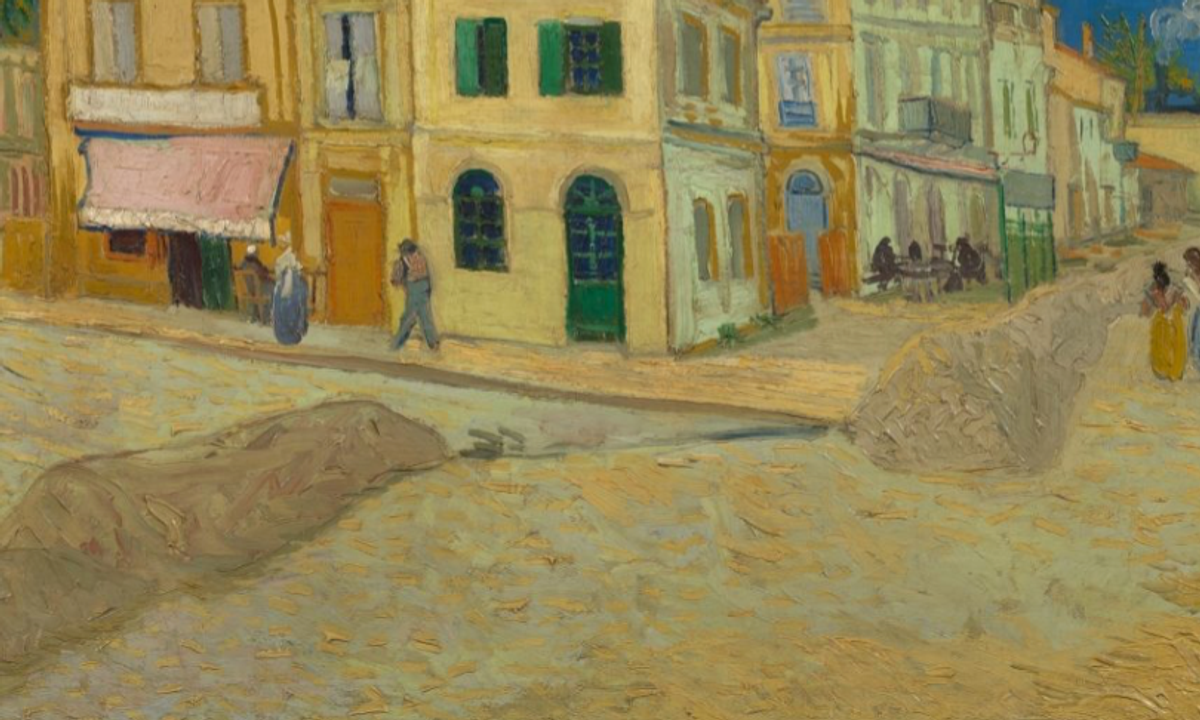
"When the painting was shown in an exhibition in 2000 an explanation was suggested: the piles were said to depict works being done on a trench for the installation of gas pipes. At that time there was no gas lighting inside the Yellow House and Van Gogh had wanted to make it possible to paint in the evenings. His colleague Paul Gauguin was just about to arrive, and this spurred him on to get gas installed."
"But the Van Gogh Museum's senior researcher, Teio Meedendorp, points out that gas lighting would not have required digging up the whole road outside the Yellow House; most of the work would have occurred inside the building with just a link to the street. In Arles, gas mains had been laid in the main roads by 1881 and there was already street lighting. Evidence of this can actually be seen in The Yellow House painting, with a prominent lamp on the far-left side."
"In a paper just on the museum's website, Meedendorp shares a better answer: the piles are actually cleansing sand, used to deal with horse manure. He points to a 1902 postcard which shows the south side of Place Lamartine (the Yellow House was on the north side). In the postcard, there is a similar pile, parallel to the edge of the road, with a man holding a shovel just visible at the far end."
The painting The Yellow House shows puzzling messy piles along the road in the foreground. An earlier suggestion identified the piles as trenching for gas pipes to bring gas lighting into the studio. Gas mains and street lighting already existed in Arles by 1881, and studio gas installation would not have required digging up the whole road. The painting itself shows a street lamp at the far left. The piles are more plausibly cleansing sand applied to manage horse manure, supported by a 1902 postcard showing a similar roadside pile and a man shovelling manure.
Read at The Art Newspaper - International art news and events
Unable to calculate read time
Collection
[
|
...
]